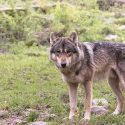We are writing letters to the appropriate authorities due to a wild boar’s head being abandoned in Saint-Maurice-de-Cazevieille.
Archives: News
Puppy show in Bourg-en-Bresse: an open letter to Town Mayor Jean-François Debat
One Voice condemns a ‘puppy show’ being held, where animals are prone to being purchased compulsively as if they are objects, on 3 and 4 December in Bourg-en-Bresse.
Animal testing like you have never seen
One Voice has developed an interactive and annotated webpage to explore the figures on animal testing and projects recently approved in France. An important and accessible resource for the general public and journalists.
Two foxes hung at the entrance of town: One Voice is launching a witness appeal
One Voice is launching a witness appeal and offering a reward to anyone who can identify those responsible for hanging two foxes corpses.
Historical ruling: the circus trainer of the ten tigers seized following a One Voice investigation has been heavily convicted!
For the first time in France, a circus trainer has been sentenced for animal mistreatment: the ten tigers. An historic ruling in One Voice’s favour!
‘Music-loving’ rats: what the media is forgetting
Rats move their heads in rhythm with music. But why do we not talk about the way in which the Japanese team obtained these results and the suffering endured by rats for this purpose?
Traditional hunting: the ministerial decrees by the Ministry of the Ecological Transition annulled by the State Council for the fourth consecutive year.
Traditional hunting: the ministerial decrees by the Ministry of the Ecological Transition annulled by the State Council for the fourth consecutive year.
Traditional hunting: the ministerial decrees by the Ministry of the Ecological Transition annulled by the State Council for the fourth consecutive year.
23.11.2022
Traditional hunting: the ministerial decrees by the Ministry of the Ecological Transition annulled by the State Council for the fourth consecutive year.
Hunting
Unsurprisingly, the State Council has annulled the 2021 ministerial decrees on traditional hunting which were already suspended in 2021, thus confirming their illegality. One Voice is pleased with this confirmation and that they stopped at nothing for the little birds affected by this cruel hunting, defended year after year by the LPO before judges of the highest French administrative jurisdiction.
The traditional hunting techniques concerned, snares, nets, and cages (traps in the form of collapsible nets and drop cages), have once again been ruled as non-selective and satisfactory alternatives exist. The decrees implemented in 2022 have, incidentally, already been urgently suspended.
Today’s victory leaves a bitter taste. When we think that these unjust authorisations have been issued despite opposing and repeated decisions (up to the Court of Justice of the European Union) and year upon year, by a Ministry of the “ecological transition”, it sends shivers down your spine. What does the future hold? Will the Ministry still disregard the State Council’s opinion, or will it finally respect the law? Muriel Arnal President of One Voice
We hope that 2022 will be the last year that we see the Ministry of Ecology, who are supposed to defend biodiversity and that which constitutes it, sign decrees authorising trapping and killing larks — and so many other little birds along the way — in this way.
What if animal defenders as a whole were not there to permanently defend animals against authorities who, in fact, break the law? How come the ministry in charge of representing animals is in fact the organiser of their killing?
We do not expect anything from the Ministry that is only ecological by name. We are preparing ourselves to counter their next decrees with our appeals which will deliver wildlife and birds to hunters whose only pleasure is destroying our heritage that is already so vulnerable due to global warming and the collapse of biodiversity. Muriel Arnal President of One Voice
Translated from the French by Joely Justice
One Voice will be at the Montpellier Tribunal on 30 November to enforce the law on protecting wolves
To compensate for the lack of protection of herds, the Hérault Prefect has trampled on the progression of measures implemented to repel wolves. One Voice’s emergency interim hearing is on 30 November 2022 in Montpellier.
One Voice at the centre of the bullfights at the grape harvest bullfighting street festival in Nîmes
In September 2022, One Voice investigators infiltrated the Nîmes grape harvest festival. They revealed discourse that promotes bullfighting and bulls being put to their deaths in front of children.
One Voice is filing a complaint against Genclis for abuse of animals in laboratories
One Voice has brought a complaint against Genclis at the Nancy Tribunal for mistreatment of hundreds of mice who were victims of unauthorised animal testing.









